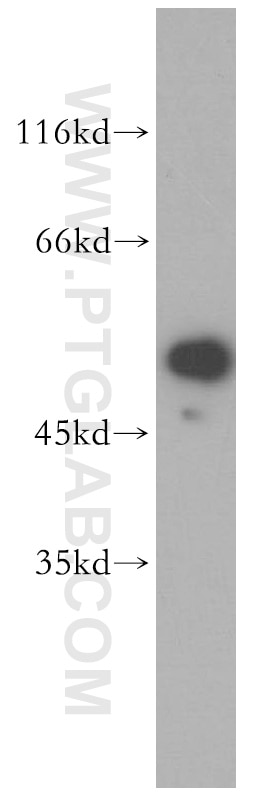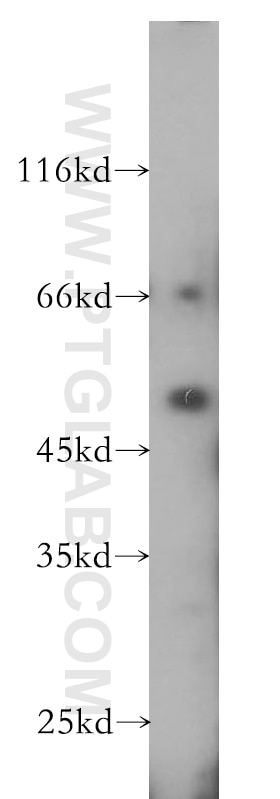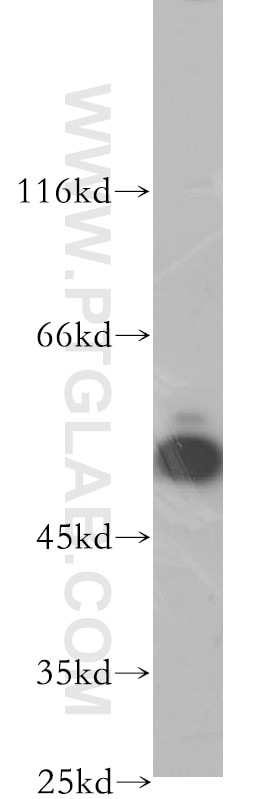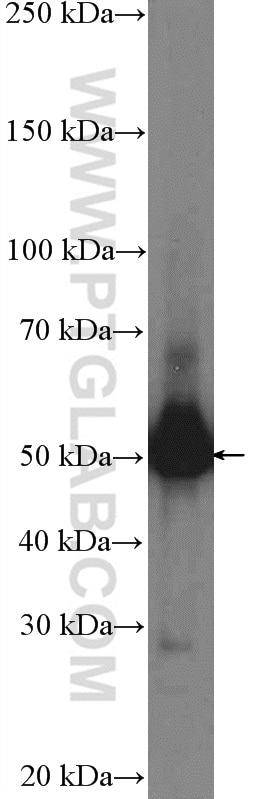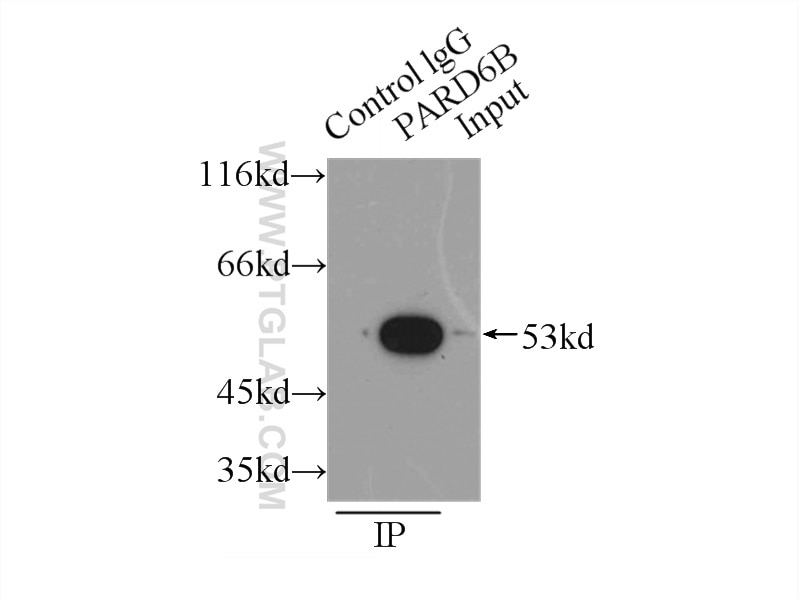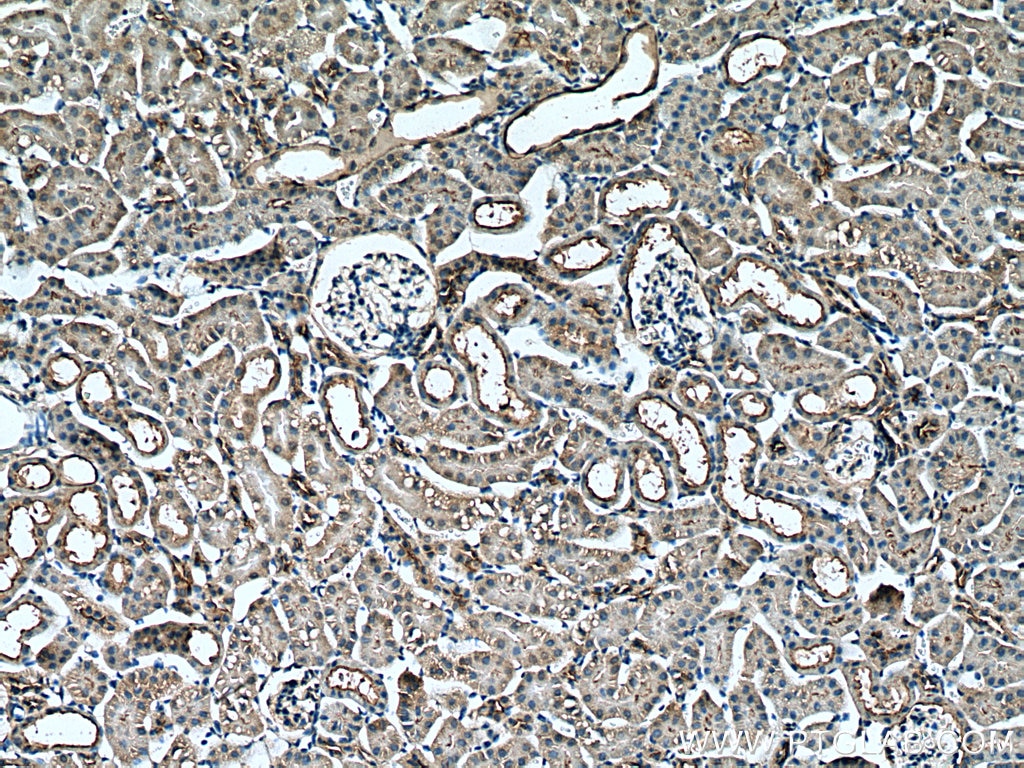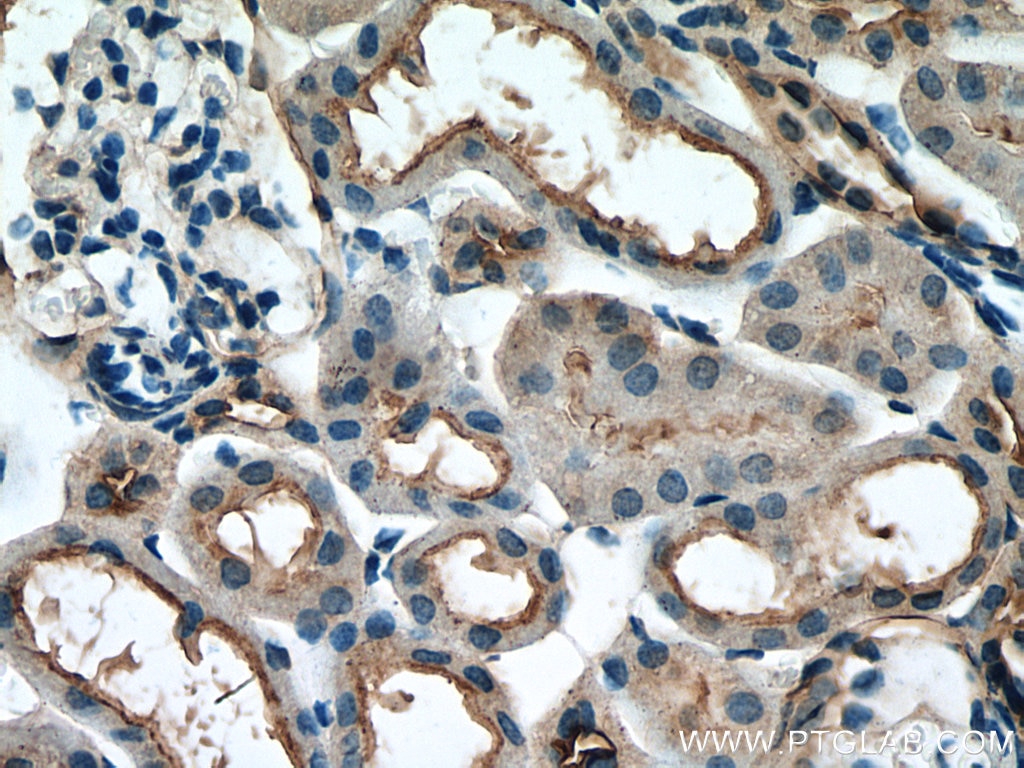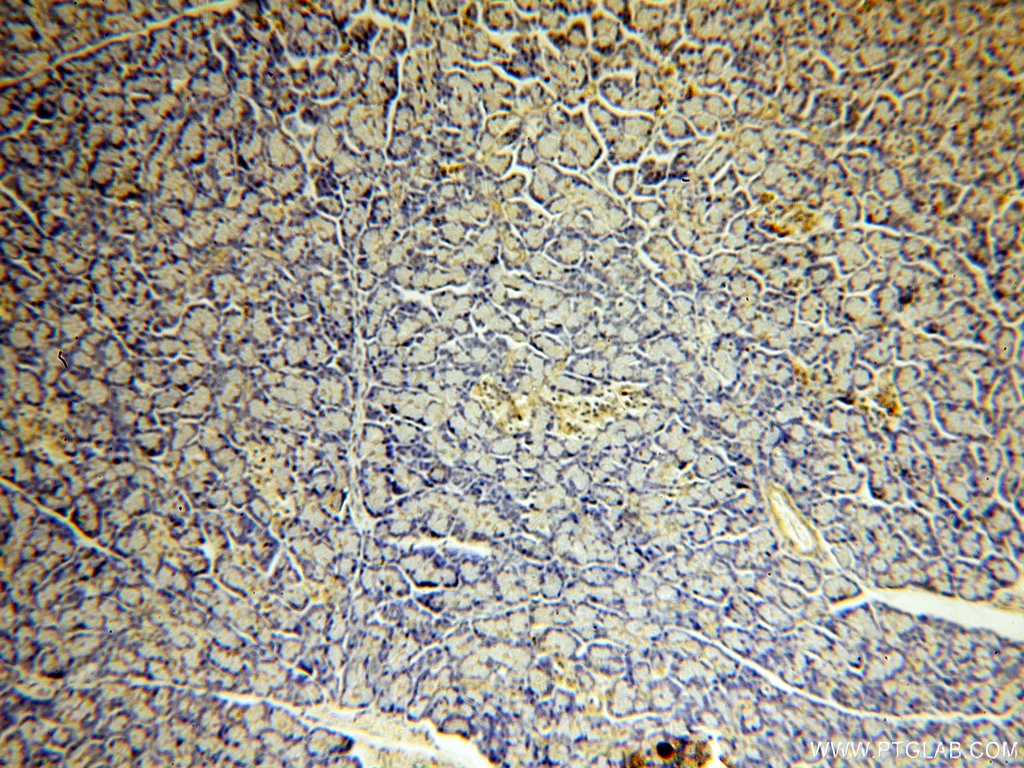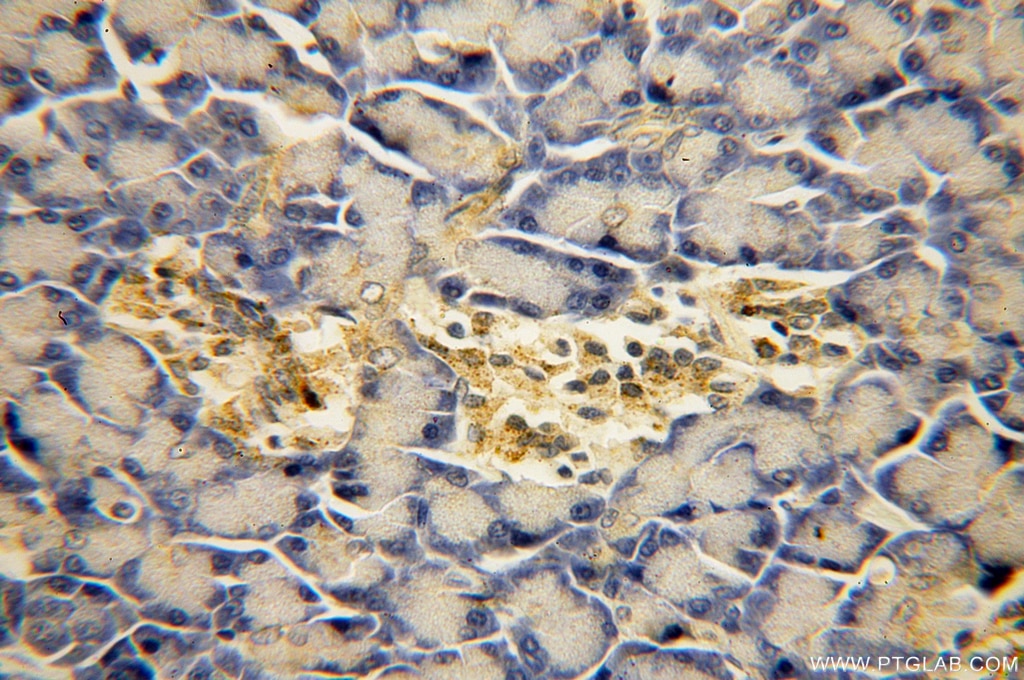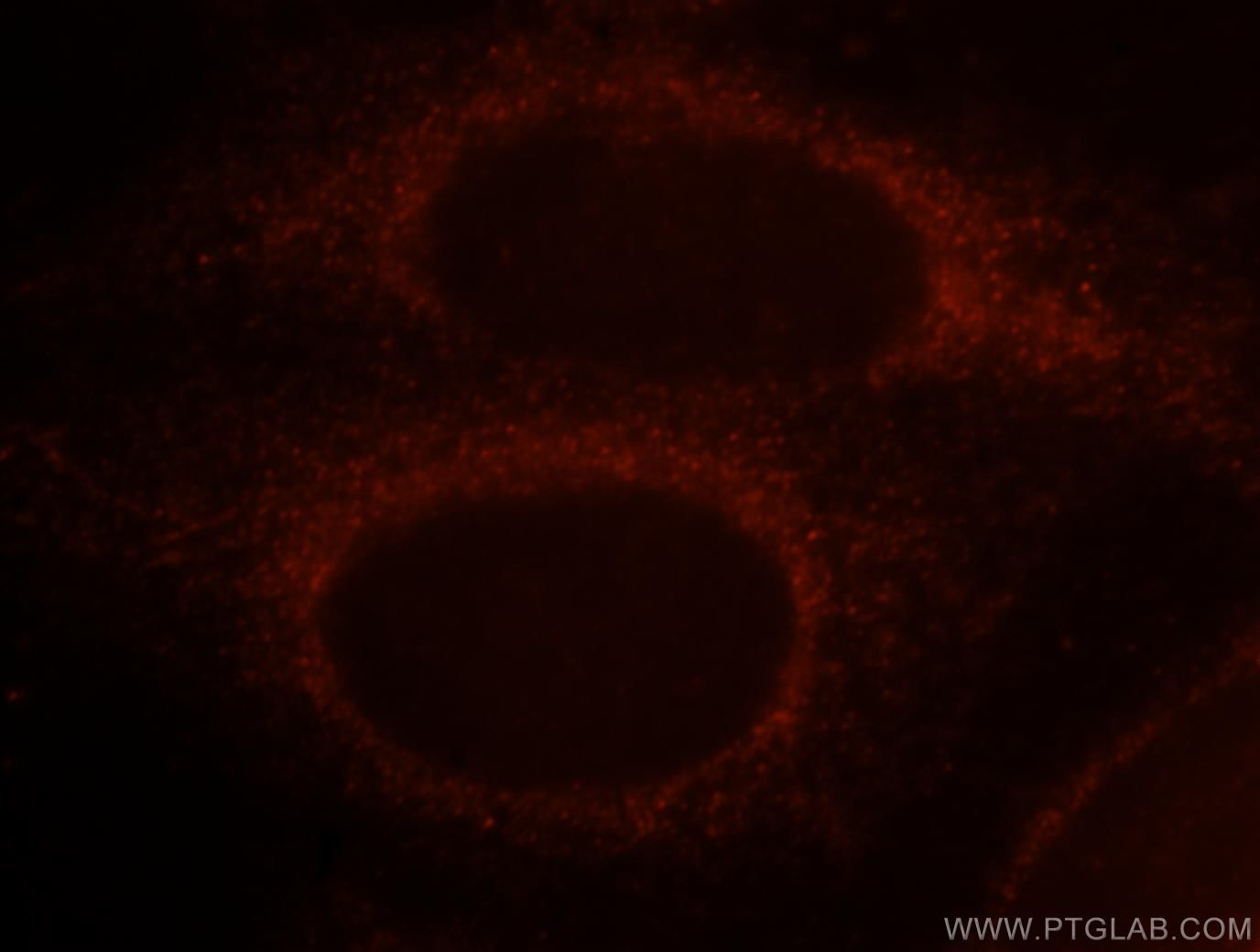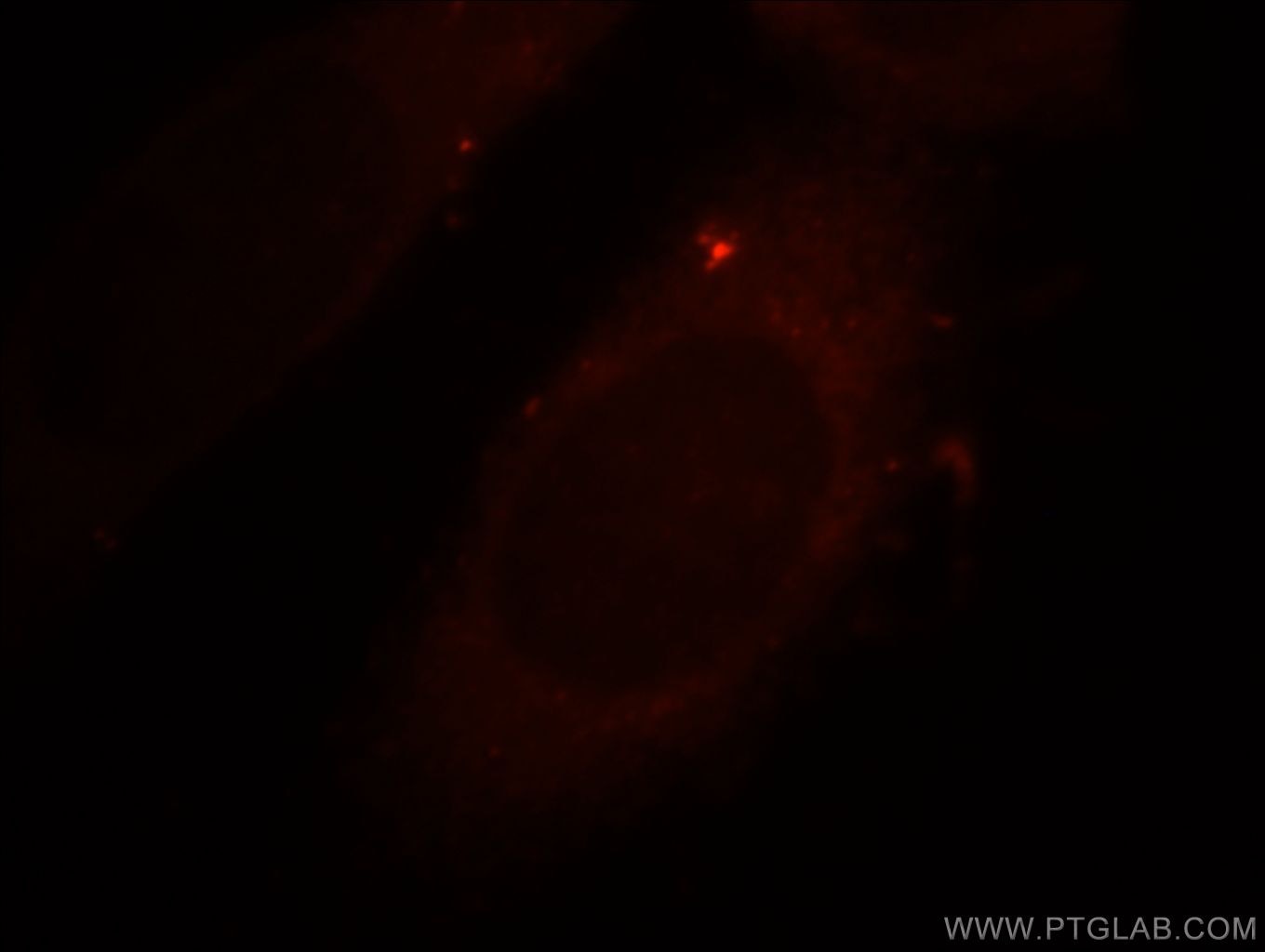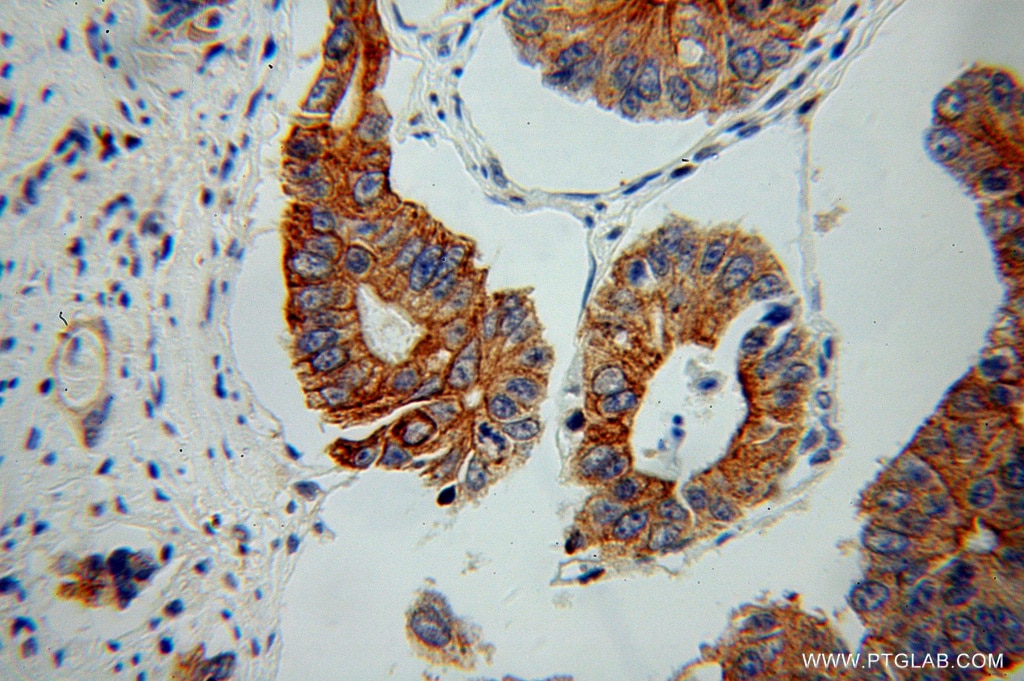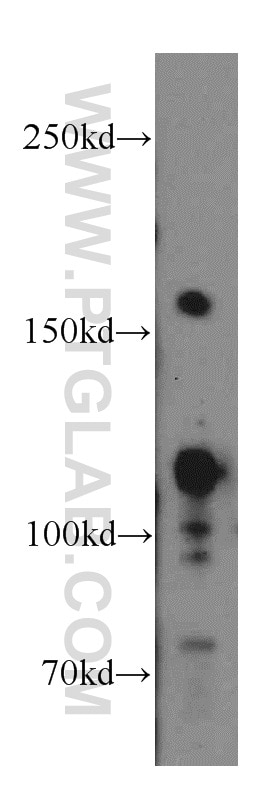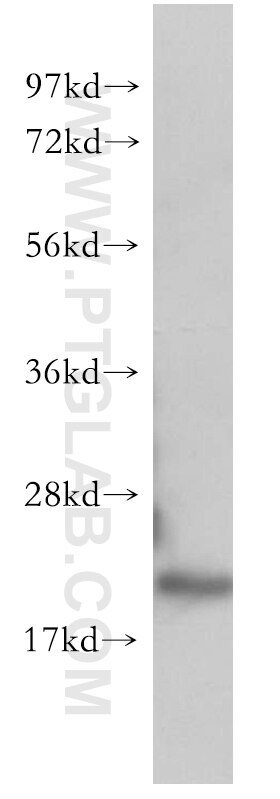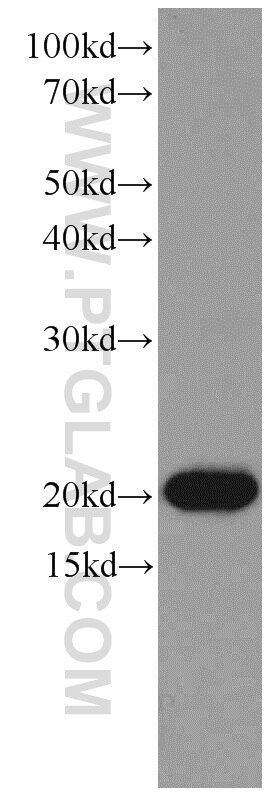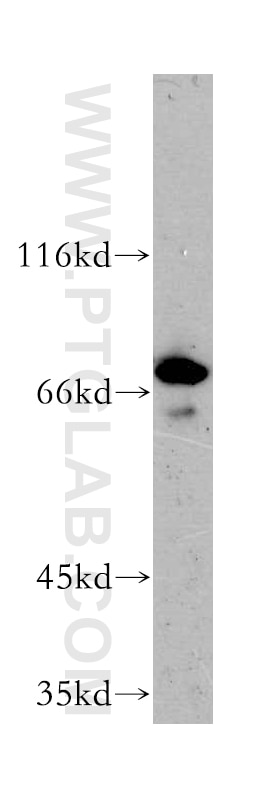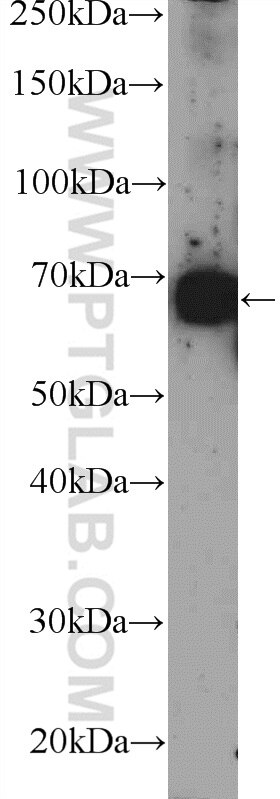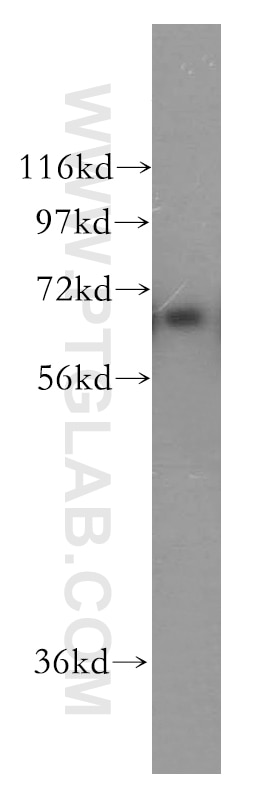Anticorps Polyclonal de lapin anti-PARD6B
PARD6B Polyclonal Antibody for WB, IHC, IF/ICC, IP, ELISA
Hôte / Isotype
Lapin / IgG
Réactivité testée
Humain, rat, souris
Applications
WB, IHC, IF/ICC, IP, ELISA
Conjugaison
Non conjugué
N° de cat : 13996-1-AP
Synonymes
Galerie de données de validation
Applications testées
| Résultats positifs en WB | cellules HeLa, cellules HEK-293, cellules PC-3, tissu placentaire humain |
| Résultats positifs en IP | cellules HEK-293 |
| Résultats positifs en IHC | tissu rénal de souris, tissu pancréatique humain il est suggéré de démasquer l'antigène avec un tampon de TE buffer pH 9.0; (*) À défaut, 'le démasquage de l'antigène peut être 'effectué avec un tampon citrate pH 6,0. |
| Résultats positifs en IF/ICC | cellules HepG2, cellules MCF-7 |
Dilution recommandée
| Application | Dilution |
|---|---|
| Western Blot (WB) | WB : 1:500-1:2000 |
| Immunoprécipitation (IP) | IP : 0.5-4.0 ug for 1.0-3.0 mg of total protein lysate |
| Immunohistochimie (IHC) | IHC : 1:50-1:500 |
| Immunofluorescence (IF)/ICC | IF/ICC : 1:10-1:100 |
| It is recommended that this reagent should be titrated in each testing system to obtain optimal results. | |
| Sample-dependent, check data in validation data gallery | |
Applications publiées
| WB | See 2 publications below |
| IF | See 1 publications below |
Informations sur le produit
13996-1-AP cible PARD6B dans les applications de WB, IHC, IF/ICC, IP, ELISA et montre une réactivité avec des échantillons Humain, rat, souris
| Réactivité | Humain, rat, souris |
| Réactivité citée | rat, souris |
| Hôte / Isotype | Lapin / IgG |
| Clonalité | Polyclonal |
| Type | Anticorps |
| Immunogène | PARD6B Protéine recombinante Ag5083 |
| Nom complet | par-6 partitioning defective 6 homolog beta (C. elegans) |
| Masse moléculaire calculée | 41 kDa |
| Poids moléculaire observé | 50-53 kDa |
| Numéro d’acquisition GenBank | BC060847 |
| Symbole du gène | PARD6B |
| Identification du gène (NCBI) | 84612 |
| Conjugaison | Non conjugué |
| Forme | Liquide |
| Méthode de purification | Purification par affinité contre l'antigène |
| Tampon de stockage | PBS avec azoture de sodium à 0,02 % et glycérol à 50 % pH 7,3 |
| Conditions de stockage | Stocker à -20°C. Stable pendant un an après l'expédition. L'aliquotage n'est pas nécessaire pour le stockage à -20oC Les 20ul contiennent 0,1% de BSA. |
Informations générales
PARD6B (also named as PAR6B) is a member of the PAR6 family. PARD6B is known to play a key role in mammary epithelial cell biology. Several studies have been reported which indicate deregulated PARD6B signaling contributes to malignant epithelial cell phenotypes due predominantly to disrupted polymerization and maintenance of tight junctions (PMID: 22957302). The approximately 4.8-kb long PARD6B mRNA was predominantly detected in both adult and fetal kidneys, while much weaker but significant signals were observed in the placenta, lung, and liver (PMID: 11260256). This antibody detects PARD6B with an apparent molecular weight of 50-53 kDa as has been demonstrated by several researches (PMID: 22496418; 25662318).
Protocole
| Product Specific Protocols | |
|---|---|
| WB protocol for PARD6B antibody 13996-1-AP | Download protocol |
| IHC protocol for PARD6B antibody 13996-1-AP | Download protocol |
| IF protocol for PARD6B antibody 13996-1-AP | Download protocol |
| IP protocol for PARD6B antibody 13996-1-AP | Download protocol |
| Standard Protocols | |
|---|---|
| Click here to view our Standard Protocols |
Publications
| Species | Application | Title |
|---|---|---|
iScience Induced retinal pigment epithelial cells with anti-epithelial-to-mesenchymal transition ability delay retinal degeneration | ||
PLoS One PKCζ and JNK signaling regulate radiation-induced compensatory proliferation in parotid salivary glands. | ||
Theriogenology Influence of Wilms' tumor suppressor gene WT1 on bovine Sertoli cells polarity and tight junctions via non-canonical WNT signaling pathway. |
